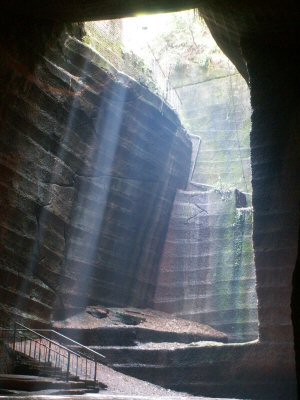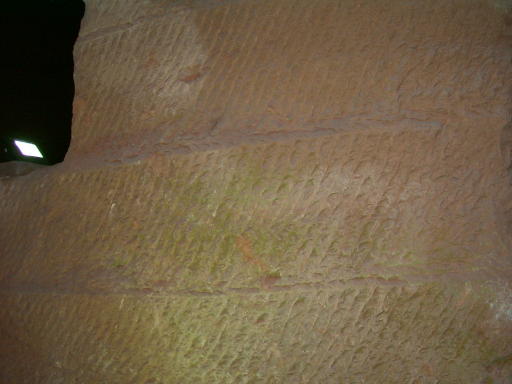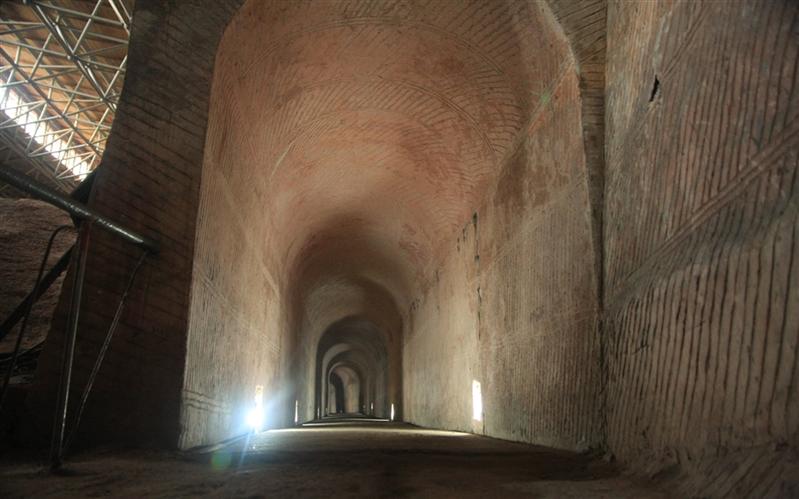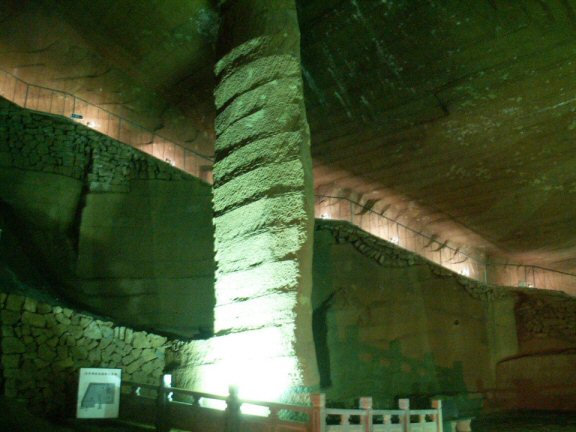|
Location: Phoenix Hill,
Zhejiang Province, China. |
Grid Reference:
29� 2' 7" N, 119� 10' 58" E. |

 Longyou Grotto's:
(Hand-Carved Caves).
Longyou Grotto's:
(Hand-Carved Caves).
The Longyou Caves were
only discovered late in the 20th century.
At least 24 caves
have been discovered so far. All of which were carved by hand.
Although the
overall excavation involved almost a million cubic metres of stone,
there is no historical record of
them or evidence of the work. Their origin is a complete mystery.
At present there is
no explanation for their existence. They represent one of the
largest underground excavations of ancient times.
They are considered
by Chinese to be the 'Ninth Wonder of the Ancient World'
|
The Longyou Caves: (Grotto's) |
The 'Mystery of a
Thousand Years'.
In June, 1992,
a villager named Wu Anai, decided to pump the water out in one
of the locally known caves revealing the first of many man-made
caves in the region. After 17 days pumping, enough water
had been removed to reveal the cave including several carved
stelae, thus confirming his idea that they were not natural
reservoirs at all, but rather man-made. The floor of the grotto
occupies more than 2,000 square meters, with the tallest point
of the cave exceeding 30 meters. The four steles of cave 1 are
symmetrically distributed. Following this discovery, he
continued to pump out another four caves only to find that they
all bore the same markings on the walls and ceilings.

A rough
estimation of the workload involved in building these five caves
is awe-inspiring. The four caves cover an average floor surface
of 1,200 square meters, so each of the caves should have
involved excavation of 36,000 cubic meters of stone. Since a
total of at least 24 such caves have already been found in
Shiyanbei Village, the overall excavation would be 900,000 cubic
meters. (1)

The chiselling
on the cave walls and ceilings was executed in such a way that
it has left them covered in a uniform pattern which some people
believe is symbolic. It is similar to pottery found in the
nearby museum which is dated between 500 and 800 BC.

It is said
that among them are seven caves whose distribution pattern
resembles that of the seven stars of the Big Dipper.
(2)
In Cave 1,
which has been opened for tourism, stone carvings executed in a
craftsmanship of ancient simplicity, of horse, fish and bird,
may be seen (Land, Water and Air). The bird head has an
appearance similar to one unearthed at the Hemudu site.
(2)
Like most
villages in southern China, there are numerous ponds in
Shiyanbei, but these are mostly rectangular, and very deep,
having been known as "bottomless ponds" by generations of
villagers. These ponds teem with fish, which are easily caught.
After the first cave was pumped dry not a single fish was to be
seen. (2)
This discovery
has called the attention of many specialists from China, Japan,
Poland, Singapore and USA. One of the most interesting and
challenging questions is how the caverns have been able to keep
their integrity for more than 2000 years.
(3)
Longyou: Gallery
of Images.



(Other
Underground Sites)
(China
Homepage) |






